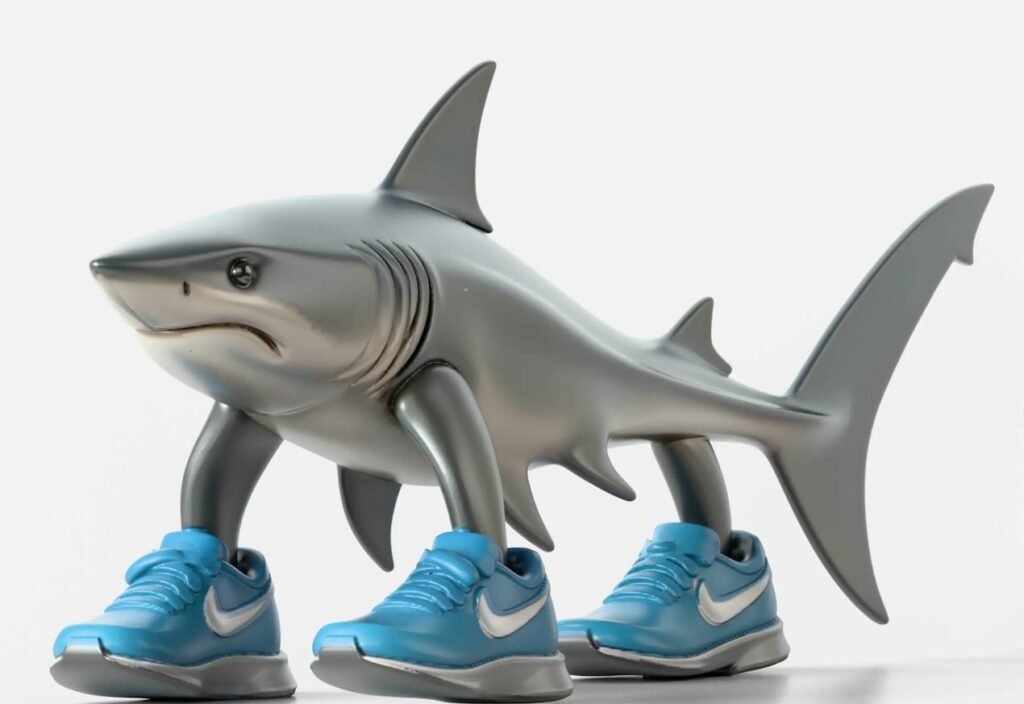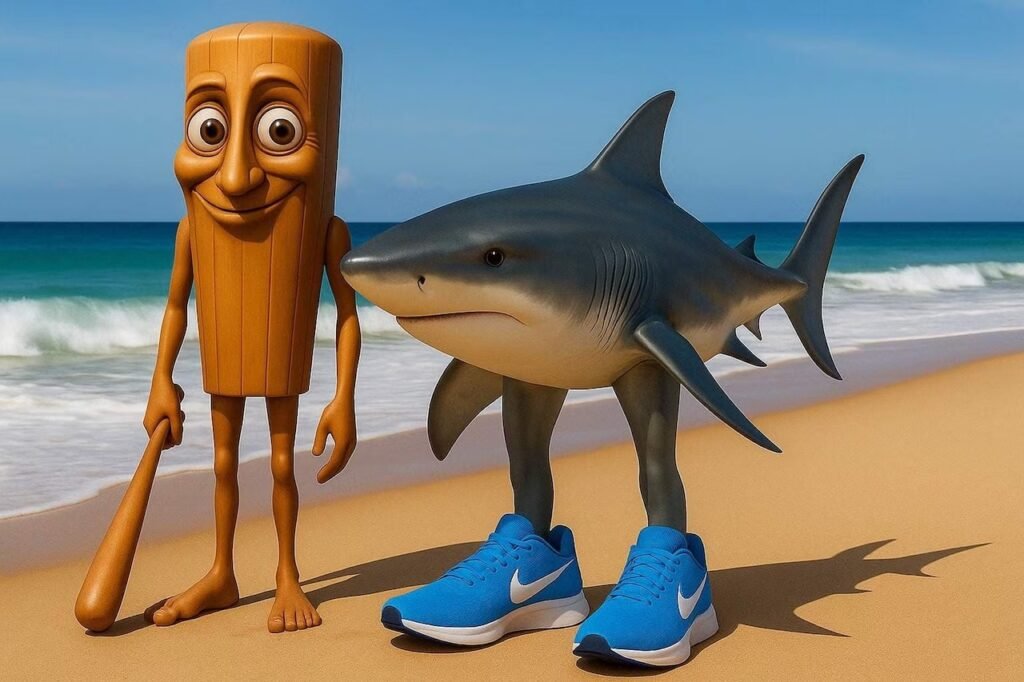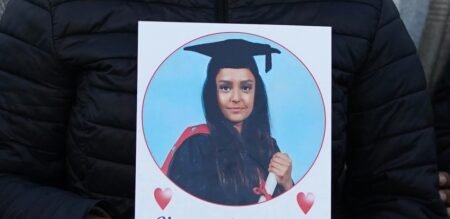“Tralalero tralala” is an internet phenomenon with deep roots in both Italian musical tradition and the surreal chaos of Gen Z meme culture, recently making headlines for its viral popularity and the controversies surrounding it. Below is a detailed breakdown perfect for answering every aspect, from its quirky origins and meme evolution to the social and religious controversies, trending discussions in 2025, and an extensive FAQ.
What is “Tralalero Tralala”?
“Tralalero Tralala” refers to a quirky, AI-generated meme that started trending on TikTok and other social platforms in early 2025. The phrase, often repeated in robotic or heavily edited voices, is paired with absurdist video edits—most notably a blue, three-legged shark wearing Nike sneakers dancing through chaotic, glitched environments.
The meme is part of a broader, surrealist trend known as “Italian brainrot.” In this trend, random characters, each with overblown and nonsensical backstories, appear in visually explosive videos. “Tralalero Tralala” stands out due to its silent, swaggering shark who doesn’t talk but simply “vibes” with the beat.
Table: Quick Facts
“Tralalero Tralala” is a testament to internet evolution: what begins as music, mutates into a meme, and evolves sometimes controversially as a reflection of online culture’s power and its pitfalls.
The Meme’s Internet Origins
The viral journey of “Tralalero Tralala” can be traced to TikTok in early 2025. A user named “@eZburger401” is credited with the first widespread version, though their account was later banned. The audio quickly circulated, often being remixed or paired with new visuals. Its sound and images were designed for maximum absurdity, helping it transcend language barriers and explode across Italian and international meme spheres.
Many discussions compare the phenomenon to American memes like “John Pork” or “Tim Cheese,” except “Tralalero Tralala” has a more overtly Italian flavour, both literally and symbolically.
Deep Roots: From Folk Music to TikTok
Interestingly, “tralalero” is not entirely a modern term. In Liguria, Italy, “trallalero” refers to a style of traditional polyphonic music, where wordless vocalisations like “tra-la-le-ro tra-la-la” are used as harmony fillers.
Meme culture, in its remix-ready spirit, may have borrowed this musical gibberish, adding to the catchiness and perceived authenticity of the phrase. While it has become a nonsense filler in internet videos, the melody and rhythm preserve subtle links to age-old Italian traditions.
Character and Visual Identity
- The “Tralalero Tralala” meme always features the iconic dancing shark, a blue, three-legged, sneaker-wearing AI creation often positioned in garishly edited, glitch-heavy environments.
- The character rarely “talks,” conveying expression through dance and movement.
- Variations feature robotic or sped-up voiceovers that shriek the phrase in fake Italian or a distorted accent, sometimes with surreal extra verses.
Going Global and Why it’s Popular
Several factors explain “Tralalero Tralala”’s explosive spread:
- Visual absurdity: a shark in sneakers is instant meme material.
- Soundtrack flexibility: it fits anything from EDM to classical opera.
- Remixability: anyone can insert the character into a new joke, scene, or absurd story.
- Silent universality: the meme works in all languages because it often relies on nonverbal communication or uses made-up words.
Its popularity is also tied to a growing “AI meme” culture, where user-generated content is sometimes purposefully glitched or satirical to create entirely new viral experiences.
The Controversy and Criticism
Offensive Origins
The original audio behind “Tralalero Tralala” did not just feature funny nonsense. The first versions included deeply offensive, blasphemous, or even Islamophobic and misogynistic language, such as Italian phrases translating to “damn God and damn Allah” and other graphic slurs.
These explicit references prompted alarm in Christian, Muslim, and broader religious circles. Critics charge that kids repeat the fun-sounding phrase without understanding its dark undertones, thus spreading derogatory or offensive content unwittingly.

Content Evolution and Meme Remixes
As often happens, the explicit content was “clipped,” removing the worst slurs and leaving only the catchy “Tralalero Tralala” phrase. The sanitised, meme-friendly version is what survives in the viral dance videos. However, some religious and cultural commentators argue that the roots, mockery and blasphemy remain, warning users to “translate before you repeat”.
Public Debates and News Coverage
- Schools and parent groups have called for increased scrutiny, especially given how children repeat sounds from memes without knowing the meaning.
- Major news platforms and online parenting advice sites have urged education about meme origins to prevent youth from unintentionally spreading offensive material.
- The meme’s popularity and its “reformed” versions still spark heated debates on platforms like Reddit and YouTube, with religious leaders and meme fans often locked in online arguments about satire, free speech, and cultural respect.
- Some defenders contend that current versions are essentially harmless, arguing memes are “just nonsense” and that longer context is lost or intentionally sanitised.
Current Events and Discussions
- In 2025, meme watchdogs and digital youth advocates have flagged “Tralalero Tralala” as both an innocent viral trend and a possible vector for offensive speech, depending on its version.
- The Italian Parliament briefly debated new internet moderation guidelines in response to the “Tralalero Tralala” controversy, exploring digital literacy efforts related to meme history in youth education.
- Tech companies like TikTok have faced calls to algorithmically downrank or add context warnings to “Tralalero Tralala” videos, especially classic audios, due to repeated parental complaints.
- On the creative side, plush toys, merchandise, and parody videos now abound, highlighting how the meme’s sanitised form has entered mainstream pop culture and digital commerce.
“Tralalero Tralala” in Culture: More Than Just a Meme
While at first glance a slice of absurd digital nonsense, “Tralalero Tralala” is a flashpoint for bigger questions about speech, satire, parent/youth relations, and the blending of musical past and meme future.
Its journey from Italian folk harmonies through edgy, tongue-in-cheek internet humour underscores how new digital trends transform, sanitise, and repurpose heritage for younger generations.










